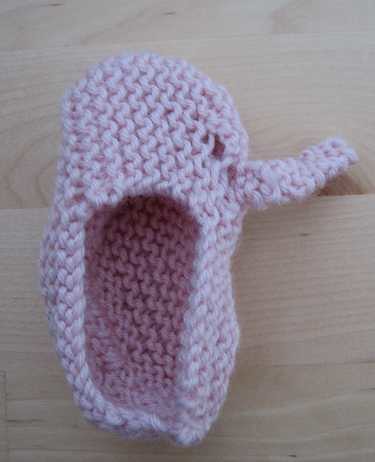As a beginning knitter, one thing has been hammered into my head as being of the utmost importance when picking up needles and casting on. This is so important that should I fail in any way, gremlins will pop out from my couch cushions, rip my needles from my hands, and chomp them to bits. They will nibble away at my fingers, so that I can never knit again since I am unworthy of being deemed a knitter. That one thing, holiest of holy, is gauge.
Every pattern starts with a reminder to us, the knitters, lest we forget: "Take time to check your gauge". Today, I share with you something even more important than gauge *hears a collective gasp across the knitti-verse*. Perhaps it is the naïveté of being a beginner in a craft where so many have gone before that I dare even suggest that this one thing is more important than gauge. Perhaps I will go down in history as being wise, and brave enough to exclaim "The emperor has no clothes". I will take shelter in the relative anonymity that is the internet and forge on. I will open myself up for potential finger-nibbling by gremlins. Heck, I'll just say it:
Reading a pattern correctly is more important than making gauge.
*looks around the room and notes a distinct lack of gremlins*
Well then, I guess I am free to explain myself. Knit something to gauge, and whatever you knit may fit, but it could be non-functional or unwearable in public. Your sweater may have sprouted a third arm. Your glove may have forgotten your opposable thumb. None of it really matters if you can't read the pattern correctly. Why then, don't pattern makers also warn "Take time to understand the pattern"?
Now, I realize in posting this that experienced knitters will get a good chuckle at this. But beginning knitters out there may learn a good lesson from my misfortune. My pattern, for a pair of Mary Jane Baby Booties read as follows:
So, I did the following:
I cast off 9 sts
I knit 2
I moved my NEXT 3 sts to the safety pin
I continued casting off 3 sts.
This produced a bootie with a very inconveniently placed strap:
Every pattern starts with a reminder to us, the knitters, lest we forget: "Take time to check your gauge". Today, I share with you something even more important than gauge *hears a collective gasp across the knitti-verse*. Perhaps it is the naïveté of being a beginner in a craft where so many have gone before that I dare even suggest that this one thing is more important than gauge. Perhaps I will go down in history as being wise, and brave enough to exclaim "The emperor has no clothes". I will take shelter in the relative anonymity that is the internet and forge on. I will open myself up for potential finger-nibbling by gremlins. Heck, I'll just say it:
Reading a pattern correctly is more important than making gauge.
*looks around the room and notes a distinct lack of gremlins*
Well then, I guess I am free to explain myself. Knit something to gauge, and whatever you knit may fit, but it could be non-functional or unwearable in public. Your sweater may have sprouted a third arm. Your glove may have forgotten your opposable thumb. None of it really matters if you can't read the pattern correctly. Why then, don't pattern makers also warn "Take time to understand the pattern"?
Now, I realize in posting this that experienced knitters will get a good chuckle at this. But beginning knitters out there may learn a good lesson from my misfortune. My pattern, for a pair of Mary Jane Baby Booties read as follows:
Cast off 9 sts (1 st remains on needle), k2, slip these 3 sts onto a safety pin, cast off 3 sts...
So, I did the following:
I cast off 9 sts
I knit 2
I moved my NEXT 3 sts to the safety pin
I continued casting off 3 sts.
This produced a bootie with a very inconveniently placed strap:

Knowing that is not what was intended, I figured it HAD to be because of gauge, the most important power in the knitti-verse. I therefore started again and paid careful attention to each and every stitch. That bootie came out the same. Luckily, at the time, I was at my LKG (Local Knitting Group). A wise and experienced knitter, Julia, came to my aid and pointed out the error of my ways... I frogged back. I then:
Cast off 9 sts (leaving one on the needle)
Knit 2
Moved THOSE three sts to the safety pin.
In the end, all was right with the world. The resultant bootie looked like this:
Cast off 9 sts (leaving one on the needle)
Knit 2
Moved THOSE three sts to the safety pin.
In the end, all was right with the world. The resultant bootie looked like this:

In hindsight, I can't read the pattern without seeing how clear and obvious the directions are. Isn't that how hindsight works, though? The benefit of time and added wisdom makes one embarrassed to remember what they once thought - how feathered bangs or acid washed jeans were a great look, how cool New Kids on the Block were, or how That Boy was simply the best thing ever to have happened to you.
That is why I kept that first, failed bootie. I will put it in a box somewhere, and when I feel like taking a trip down memory lane, I will find it (probably under a Vanilla Ice cassette tape), laugh at it, remember lessons learned, and I'll realize just how much I've learned and how much is left to know.
That is why I kept that first, failed bootie. I will put it in a box somewhere, and when I feel like taking a trip down memory lane, I will find it (probably under a Vanilla Ice cassette tape), laugh at it, remember lessons learned, and I'll realize just how much I've learned and how much is left to know.




2 Comments:
Hi
Yes you are rigth, some times we are so excited to see the finishing project that we just forget to read.
I'm also a beginner and that hapens to me all the time.
Happy Knitting
http://littlewilds.blogspot.com/
Cristina Salgueiro
Don't feel bad about your mistakes. I've been knitting for decades, and the early mistakes (some chronicled on my blog) made me a better knitter. It is indeed important to read the pattern because you can determine if everything is right for you. And sometimes there are mistakes. I generally read a pattern and sketch out what the design tells me to do, and that often enables me to figure out changes I want to make (substituting short-row shoulders for "steps", aligning ribbing, or adjusting the placement of a motif)
primetimeknitter.typepad.com
Post a Comment